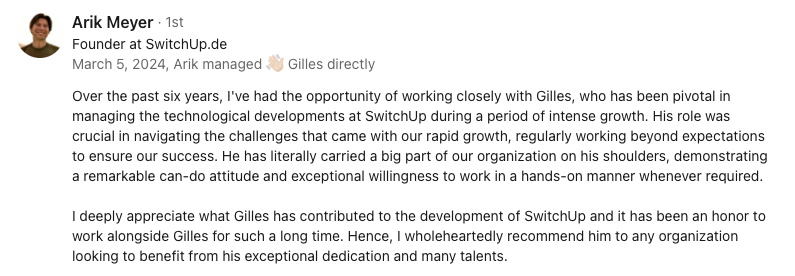Abstract:
This article explores the transformative power of remote work technologies in reshaping the workspace landscape. It highlights how advancements in virtual collaboration tools and digital communication platforms are enabling seamless work-from-home experiences, thereby overcoming traditional geographical barriers. The focus is on the latest remote work solutions that offer both efficiency and flexibility, catering to the needs of a diverse workforce. Furthermore, the discussion extends to the implications of these technologies on team dynamics and organizational structures, emphasizing the necessity for businesses to adapt to tech-driven remote offices. The piece serves as a guide for technology leaders seeking to implement effective remote work strategies that not only boost productivity but also foster a culture of innovation and inclusivity in the future of work.
the rise of remote work technologies
There has been an unprecedented surge in remote work technologies, reshaping how we perceive and interact with the workplace. With these advancements, the traditional concept of working within the four walls of an office is being challenged and transformed. This transformation is more than just a trend; it's a significant shift towards a more flexible and inclusive work environment.
Remote technologies have managed to tear down geographical barriers, allowing teams dispersed across various locations to collaborate efficiently as if they were in the same room. Imagine being able to work from the comfort of your home, a cafe, or even another country, while still being seamlessly integrated into your organization's workflow. That's the power these technologies hold, offering flexibility and freedom previously thought unattainable.
Such technologies are crucial now more than ever, as the world grapples with changes in how business and productivity are defined. The demand for virtual collaboration tools has skyrocketed, pushing companies to adopt and adapt swiftly. The rise of cloud-based solutions, video conferencing software, virtual whiteboards, and project management platforms are a testament to this shift, all aimed at making remote work not just feasible, but remarkably efficient.
Understanding the significance of these innovations is essential for both managers and employees. Organizations are reimagining their structure and operational strategies to accommodate a remote-friendly atmosphere. This involves not just the technical implementation of tools but also fostering a culture of trust and accountability, enabling teams to thrive irrespective of physical distance.
Importantly, remote work technologies can lead to increased employee satisfaction, higher productivity levels, and even cost savings. By reducing the need for physical office space, companies can allocate resources more effectively. Additionally, employees appreciate the better work-life balance that remote work can offer, leading to improved morale and retention rates.
From a professional standpoint, these changes prompt us to rethink conventional working methods and consider how embracing these technologies can benefit our careers and personal lives. As we explore these advances further, it's worth pondering how they can revolutionize our work routines and enhance our overall effectiveness.
The rise of remote technologies is more than just a trend; it's an evolution in work culture. As we move forward, it's crucial to acknowledge and harness these tools to create a more adaptable, productive, and employee-friendly work environment. Welcome to the new age of work where the office is wherever you are, and the possibilities are endless.
advancements in virtual collaboration tools
A host of virtual collaboration tools have dramatically shifted how teams interact and collaborate in a work-from-home environment. These tools are crucial for achieving seamless communication, efficient project management, and maintaining team coherence despite physical separation.
video conferencing platforms
One of the most significant developments is the rise of video conferencing platforms. Tools like Zoom, Microsoft Teams, and Google Meet have transformed meetings, allowing face-to-face interaction without the need for physical presence. These platforms provide robust features such as:
- HD video and audio quality for clear communication
- Screen sharing to facilitate presentations and demonstrations
- Breakout rooms for smaller group discussions within larger meetings
- Chat functions for real-time messaging during calls
The simplicity and effectiveness of these platforms make them indispensable for remote teams, ensuring that the flow of communication remains uninterrupted and productive.
project management software
Project management software has also seen significant enhancements, enabling teams to coordinate tasks and track progress efficiently. Tools like Trello, Asana, and Monday.com offer various features designed to keep projects on track:
- Task assignment and tracking to ensure all members know their responsibilities and deadlines
- Visual project timelines like Gantt charts for better project visualization
- Integration with other tools such as Slack, Google Drive, and Dropbox for a connected workflow
- Real-time collaboration where multiple team members can update and comment on tasks simultaneously
These features contribute to a more organized and coherent approach to project management, boosting productivity and accountability within teams.
digital brainstorming and whiteboard tools
Another exciting advancement is the introduction of digital brainstorming and whiteboard tools. Platforms like Miro, Jamboard, and Conceptboard offer:
- Interactive canvases for collaborative mind mapping and idea generation
- Sticky notes that mimic traditional whiteboarding
- Templates and frameworks to structure brainstorming sessions
- Real-time updates allowing participants to see changes as they happen
These tools make it possible for teams to engage in creative problem-solving and brainstorming sessions as if they were in a physical room together, fostering innovation and collaborative thinking.
additional digital collaboration tools
Beyond video conferencing and project management, several other digital resources play a critical role in empowering remote work:
- File sharing services: Tools like Google Drive, Dropbox, and OneDrive facilitate easy sharing and storage of documents, ensuring that team members have access to necessary resources at all times.
- Instant messaging apps: Platforms such as Slack, Microsoft Teams, and WhatsApp enable real-time communication, essential for quick interactions and updates.
- Time tracking software: Tools like Toggl, Harvest, and Clockify help teams monitor time spent on tasks, ensuring better time management and productivity tracking.
The combination of these tools fosters a holistic work environment, breaking down the barriers typically associated with remote work. They collectively contribute to improved productivity and help maintain a cohesive team dynamic, essential for successful remote operations.
benefits for remote teams
The benefits of these advancements are substantial. Improved productivity, a sense of unity, and the ability to efficiently manage tasks are just a few of the advantages. Teams can now collaborate with ease, ensuring that physical distance does not hinder performance. These technologies also support flexibility in work schedules, allowing employees to maintain a better work-life balance, thereby boosting overall job satisfaction and retention.
In embracing these tools, organizations pave the way for a future where working from any location is not just possible but also efficient and effective. This shift towards digital collaboration marks a new chapter in how we work, paving the way for more dynamic, flexible, and productive professional environments.
impact of remote technologies on team dynamics and organizational structures
Remote work technologies have profoundly influenced team dynamics and organizational frameworks. Adapting to a technology-driven remote office model has become essential for businesses aiming to remain competitive and inclusive. This adaptation has redefined the way teams interact, collaborate, and function, paving the way for both challenges and remarkable opportunities.
challenges and opportunities
Implementing remote technologies is not without its hurdles. One of the primary challenges is maintaining cohesive teams when members are scattered across various locations. The absence of physical proximity can lead to feelings of isolation and disconnection among team members. However, the integration of platforms like Slack and Microsoft Teams helps mitigate these issues by offering digital spaces where employees can interact, share updates, and maintain a sense of community.
- Maintaining communication: Regular virtual meetings and check-ins can ensure that everyone remains on the same page, fostering a collaborative environment despite the physical distance.
- Building trust: Managers must foster a culture of trust and accountability, encouraging team members to take ownership of their tasks and responsibilities.
- Leveraging technology: Utilizing tools for video calls, project management, and real-time collaboration can streamline workflows and enhance productivity.
Organizations have to rethink their structures to accommodate a distributed workforce effectively. Emphasizing flexibility and adaptability can help businesses create an inclusive environment where employees feel valued and supported regardless of their physical location. By embracing remote technologies, companies can tap into a broader talent pool, attracting highly-skilled individuals worldwide, hence fostering a diverse and dynamic workforce.
enhancing team cohesion
Maintaining strong team cohesion in a remote work setting requires intentional effort. Regular team-building activities and virtual social events can help bridge the gap created by distance. Managers can schedule informal video calls, such as virtual coffee breaks or game sessions, to encourage team bonding.
Moreover, recognizing achievements and providing constructive feedback during virtual meetings can boost morale and reinforce a sense of belonging. Celebrating milestones and accomplishments, whether big or small, can significantly impact team spirit and motivation.
- Virtual team-building: Organized activities that promote interaction and collaboration can strengthen relationships.
- Regular recognition: Acknowledging hard work and achievements can keep morale high and maintain engagement.
- Open communication channels: Encouraging open dialogue and feedback to address concerns and improve processes continually.
organizational structure and adaptability
Transitioning to a remote work model often requires organizations to restructure their operational strategies and policies. Embracing flexibility in work schedules can accommodate diverse employee needs, leading to higher job satisfaction and improved work-life balance. This change not only benefits employees but also enhances overall organizational effectiveness.
Implementing effective remote work solutions also demands continuous learning and adaptability. Businesses must stay updated with the latest technological advancements and be willing to invest in training programs to upskill their workforce. Encouraging a culture of continuous learning ensures that employees remain adept at using new tools and technologies, thereby maintaining productivity and efficiency.
- Flexible policies: Adapting work schedules to meet employees' needs can improve satisfaction and retention.
- Continuous learning: Investing in training programs to keep the workforce skilled and updated with the latest tools.
- Regular assessments: Periodically evaluating the effectiveness of remote work strategies and adapting accordingly.
The impact of remote work technologies on team dynamics and organizational structures is both transformative and promising. By leveraging the right tools and fostering a culture of trust, adaptability, and continuous learning, organizations can not only maintain strong, cohesive teams but also thrive in this new era of work. Embracing these changes opens up a world of opportunities, pushing businesses towards a more flexible, inclusive, and productive future.
strategies for implementing effective remote work solutions
Establishing and maintaining a productive remote work environment requires thoughtful planning and implementation. Technology leaders need practical strategies to integrate remote work technologies effectively, fostering both productivity and innovation in their teams. Here are some key considerations and best practices to guide this process:
prioritize communication and collaboration tools
Effective communication is the backbone of remote work. Implementing robust digital communication tools is essential for keeping team members connected and engaged. Video conferencing platforms, instant messaging apps, and project management software should be prioritized:
- Select the right tools: Choose platforms that offer seamless integration and high reliability, such as Zoom for video calls, Slack for messaging, and Trello for project management.
- Encourage regular check-ins: Schedule daily or weekly meetings to maintain team cohesion and ensure everyone is aligned with their tasks and goals.
- Foster open communication: Encourage an open dialogue where employees feel comfortable sharing ideas, feedback, and concerns.
These tools help maintain a consistent flow of information, ensuring that team members remain informed and engaged regardless of their location.
create a robust remote work policy
A well-defined remote work policy provides clarity and sets expectations for employees. It should cover various aspects such as work hours, communication protocols, and performance evaluation:
- Set clear guidelines: Define work hours, availability expectations, and communication norms to maintain productivity.
- Outline technology usage: Specify the tools and platforms to be used for communication, collaboration, and task management.
- Establish security protocols: Implement data security measures to protect sensitive information and ensure compliance with regulations.
A comprehensive policy helps create a structured and secure work environment, enabling employees to perform their tasks effectively.
invest in training and development
To maximize the benefits of remote work technologies, continuous learning and development are crucial. Investing in training programs ensures that employees are proficient in using the tools and resources available to them:
- Offer regular training sessions: Provide ongoing training to keep teams updated with the latest tools and features.
- Encourage skill development: Support employees in pursuing courses and certifications that enhance their skills and career growth.
- Promote a learning culture: Foster an environment where continuous improvement and learning are valued and encouraged.
By prioritizing training, organizations can ensure that their teams are equipped to utilize technology efficiently, enhancing overall productivity.
emphasize flexibility and inclusivity
Flexibility is one of the greatest advantages of remote work. Embracing this flexibility can lead to higher job satisfaction and improved work-life balance for employees. Moreover, fostering an inclusive culture is essential for leveraging diverse perspectives and ideas:
- Adopt flexible schedules: Allow employees to choose their working hours, provided they meet deadlines and deliver quality work.
- Support diverse needs: Recognize and accommodate the varying needs of team members, whether they are parents, caregivers, or have different working preferences.
- Promote inclusive practices: Encourage diversity and inclusion by providing equal opportunities and recognizing the contributions of all team members.
Creating a flexible and inclusive work environment helps attract and retain talent, fostering a positive and dynamic organizational culture.
regularly assess and adapt strategies
The implementation of remote work solutions is an evolving process. Regularly evaluating the effectiveness of these strategies and making necessary adjustments is vital for continued success:
- Conduct regular reviews: Assess the performance of remote work tools and policies periodically to identify areas for improvement.
- Gather employee feedback: Encourage employees to share their experiences and suggestions for enhancing remote work practices.
- Stay updated with trends: Keep abreast of new developments in remote work technologies and best practices to remain competitive.
Continuous evaluation and adaptation ensure that remote work solutions remain effective and relevant, supporting long-term organizational goals.
By thoughtfully integrating these strategies, technology leaders can create a thriving remote work environment that boosts productivity, fosters innovation, and promotes a culture of inclusivity. Embracing these practices helps organizations stay ahead in this transformative era of remote work.
You might be interested by these articles:
- Navigating the New Era of Remote Work Tech
- What do you do if your virtual team's communication is falling apart?
- Boosting Security for Remote Startups with EU Compliance





